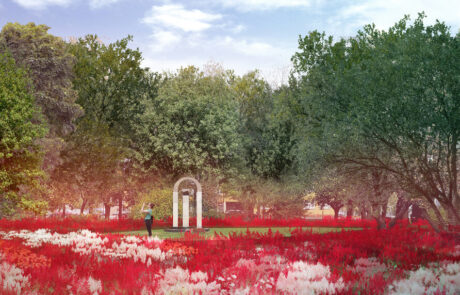Jõgeva Central Square Architectural Competition
Keywords: Small places
Address: Jõgeva City, Jõgeva County
Area: 7,4 hectares
Year: 2020
Result: Unawarded
Organizer: Jõgeva Municipality Government
Architecture: Mudel Architects
Landscape architecture: Pihamaa Studio
Visualization: Mudel Architects
The task was to revitalize the city center of Jõgeva, propose new ideas for the central square and main street, and integrate surrounding parks into the city center. The competition area was quite fragmented, with an eclectic city center, parks lacking function, a car-centric main street, and scattered focal points, all needing to be unified into a whole and logic city center.
The proposed vision “Small Places” (in Estonian “Väikesed kohad”) emphasized the development of two main axes within the competition area and the division of space into smaller, human-scaled segments.
The main street, or Suur Street, was redesigned as a promenade, granting greater rights to pedestrians and bikers.
The central square was divided into smaller spaces and articulated in the way that makes movement from one area to another much smoother. New architectural volumes were envisioned on the perimeter of the central square, as dictated by the design brief. The required architectural volume was proposed in three smaller volumes that better fit with the existing city scape.
The Family Park near the Cultural Center was conceptually divided into two areas: a play area and festive grounds for larger events. Additional features were added, like a amphitheater in front of the existing stage and a fire pit integrated into the landscape.
In Betti Alver Park, the “Red Umbrella” theme was revived with a proposed landscaping installation.
Friend’s Park was reimagined as a pocket park, divided into smaller sections where each space is dominated by a memorial bench. Memorial benches from various locations around the city were brought together here under a unified theme.
Connections to the railway and bus stations were made as convenient as possible for pedestrians and cyclists, e.g., elevating crossings with motor roads to the level of sidewalks.







